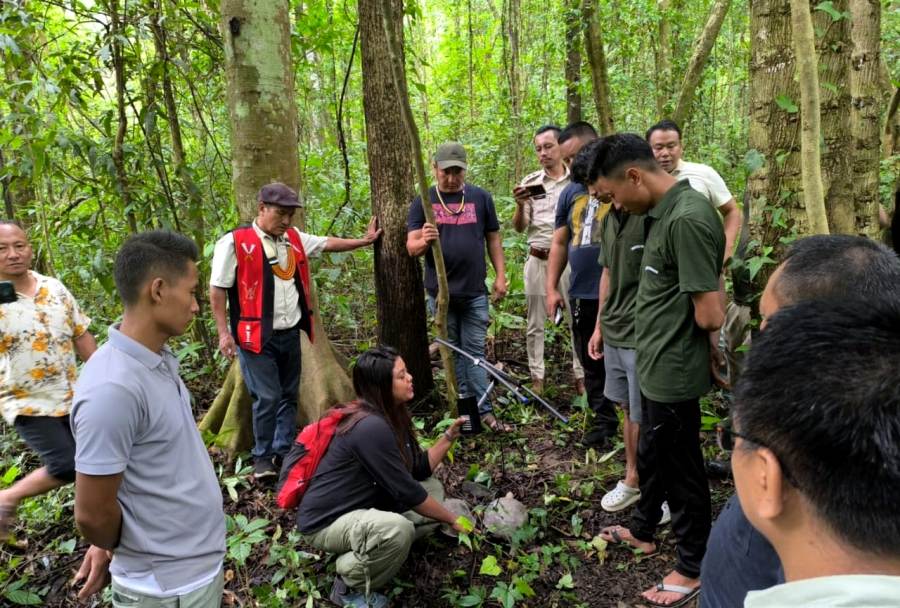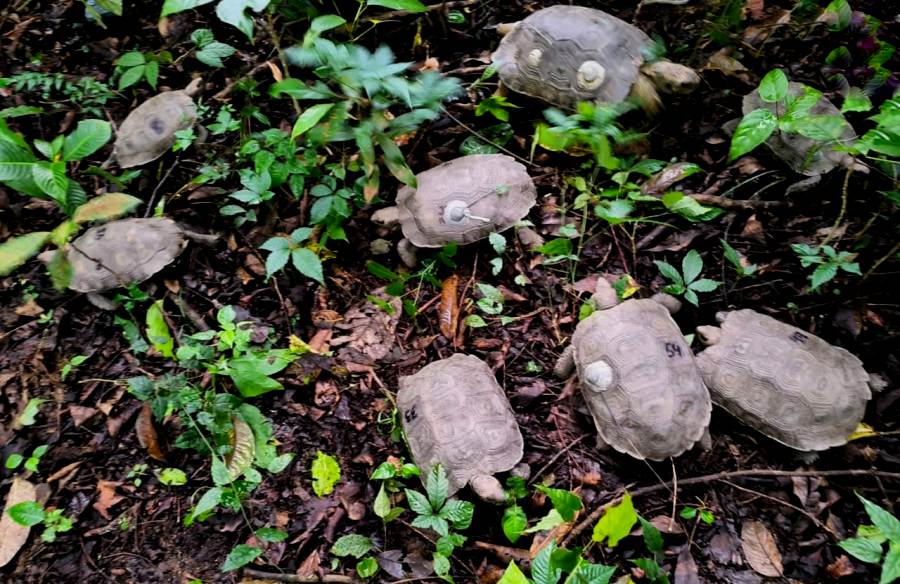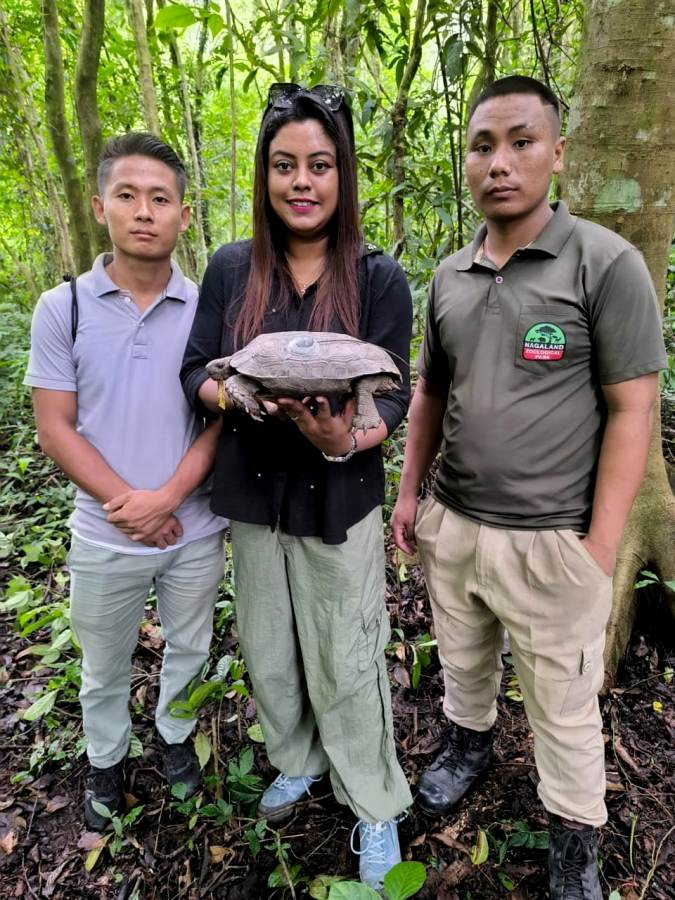TUESDAY, DECEMBER 02, 2025
- Home
- Asian Giant Tortoises reintroduced in Nagaland’s Peren district
Asian Giant Tortoises reintroduced in Nagaland’s Peren district
Ten captive-bred Asian Giant Tortoises were released into a protected reserve in Nagaland’s Peren district, marking a key milestone in conservation efforts for the endangered species
Share

DIMAPUR — Ten Asian Giant Tortoises—bred in captivity to rescue them from the brink of extinction—were reintroduced into a protected community reserve in Peren district on August 2, marking a significant moment for wildlife conservation in Nagaland.
The initiative, spearheaded by the state’s Forest Department in collaboration with India Turtle Conservation Programme (ITCP), marks a major step in the effort to restore populations of one of Asia’s most endangered tortoise species.
A press release issued on Monday stated that the event saw participation from senior forest officials, local leaders, and conservationists. The Asian Giant Tortoise (Manouria emys), the largest tortoise species in mainland Asia, is listed as “Critically Endangered” on the IUCN Red List.
The ten individuals released were bred and raised at Nagaland Zoological Park, which now hosts the country’s largest captive population of this species.

“These tortoises were bred and head-started from a conservation colony at the Nagaland Zoological Park,” said C Zupeni Tsanglai, Director of the park.
Often referred to as the “small elephants of the forest,” Asian Giant Tortoises play a vital role in forest ecosystems, aiding in seed dispersal and scavenging.
They help regenerate forests by dispersing seeds and also keep the forest floor clean, explained Dr. Shailendra Singh of the ITCP.
Also read Editor's pick: Rare plant species discovered in Nagaland, a first for India
The reintroduction site was chosen after careful habitat suitability assessments across various forested regions in the state.
Wildlife Warden Dimapur, Tokaho Kinimi, noted that Nagaland’s community and conservation reserves are increasingly proving effective in preserving biodiversity.

““Other than National Parks and Wildlife Sanctuaries, protected areas such as Community and Conservation Reserves in Nagaland have been performing quite well to preserve the forests and wildlife under joint leadership of the communities and the Forest department,” he said.
The released tortoises were placed in a soft-release enclosure within the reserve to help them develop site fidelity before dispersing into the wild. Each tortoise was fitted with a VHF telemetry tag to allow researchers to monitor their movements and survival in the dense rainforest terrain.
“Once the pilot release is successful, more individuals will be released in this landscape to recover the decimated wild populations”,” said Sushmita Kar, ITCP Project Coordinator. She added that each tortoise underwent health screenings and a six-month quarantine before being cleared for transport and release.
As part of the effort, local youths have been appointed as ‘Tortoise Guardians’ to help monitor the animals and ensure their safety.
A dedicated Turtle and Tortoise Corner was also inaugurated at the community hall to raise awareness and showcase local conservation efforts.
Speaking at the event, Additional Deputy Commissioner of Peren, D. Robin, assured that the district administration would take necessary steps to ensure the long-term protection of the species.

